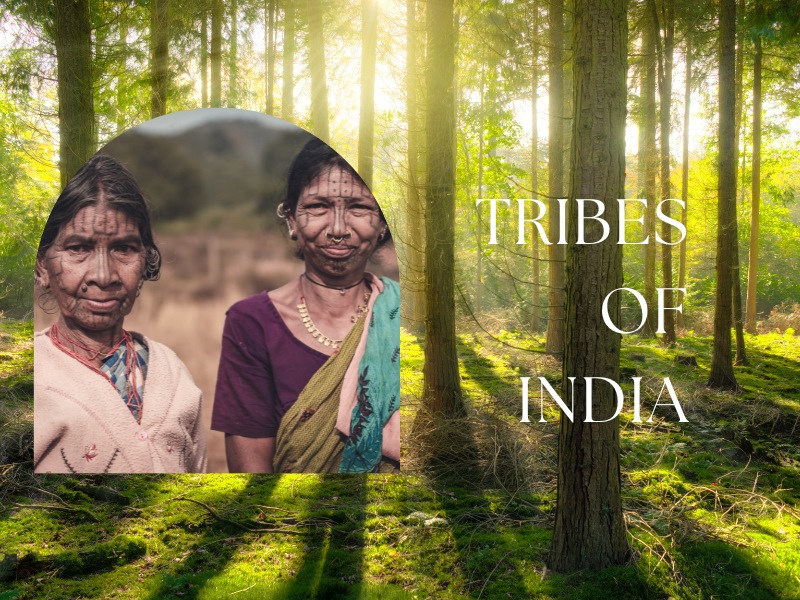Tribal communities in India embody a captivating tapestry of indigenous cultures, time-honoured traditions, and distinctive ways of existence. With roots deeply intertwined within the annals of the nation’s history, these communities stand as a vital facet of India’s cultural fabric. This article embarks on a journey to uncover the essence of tribal communities, traversing through their geographical spread, population dynamics, and literacy rates. Moreover, we delve into the resilience of these communities, exploring their challenges and remarkable contributions to India’s rich cultural heritage. By illuminating the diverse lives of tribal communities, we gain insights into the intricate interplay between tradition and modernity within the vibrant landscape of India.
Understanding Tribes
Tribal communities, colloquially known as Adivasis or indigenous people, represent a vibrant tapestry of distinct groups that have inhabited specific regions of India for generations. These communities possess their own languages, rich cultural practices, and customs that distinguish them from mainstream society. Rooted deeply in their connection to the land and nature, their unique way of life has been nurtured and transmitted across successive generations, giving rise to a captivating mosaic of cultural diversity that enriches the fabric of the nation. This article delves into the intricate essence of these tribal communities, unravelling their cultural heritage, socio-economic challenges, and the vital role they play in India’s social tapestry.
Tribal Population and Geography
India hosts a diverse tapestry of tribal communities, collectively constituting a substantial portion of the nation’s population. These communities are widely dispersed across the country’s expanse, with concentrated clusters in regions like Jharkhand, Chhattisgarh, Odisha, Madhya Pradesh, and certain northeastern states. The geographical variation of India contributes to the cultural tapestry of tribes, as each area boasts its distinct traditions and practices. Notably, tribal populations are dispersed across India’s mainland, spanning states and union territories. States like Mizoram, Lakshadweep, Meghalaya, and Nagaland have notably high tribal settlements, with proportions of 94.4%, 94%, 86.1%, and 86.5%, respectively. Additional significant tribal settlements are present in Madhya Pradesh, Orissa, Maharashtra, Rajasthan, Chhattisgarh, Assam, and West Bengal. Altogether, these scheduled tribes constitute approximately 8.6% of India’s entire population. It’s essential to recognize that more than 700 tribes are officially recognized under Article 342 of the Indian constitution, dispersed across various states and union territories, collectively forming a rich mosaic of indigenous identities.
Tribal Literacy Rates
Tribal communities in India have faced ongoing challenges in attaining education, reflecting their historically lower literacy rates compared to the national average. While education strides have been made across the country, tribal groups encounter obstacles in accessing quality learning opportunities. In response, both government initiatives and non-governmental organizations have initiated efforts to enhance education prospects for tribal individuals, recognizing its significance in preserving cultural heritage and catalyzing socioeconomic advancement. Notably, the literacy rates among Indian tribes have showcased a noteworthy transformation over the years. In 1961, the recorded literacy rate was a mere 8.5%. This transformed landscape is attributed to various government-led initiatives, including reservation schemes designed to uplift tribal populations. Consequently, as of the 2011 census, the tribal literacy rate has surged to 63.1%. This rate discrepancy extends further when considering gender, with male tribal members achieving a literacy rate of 71%, while their female counterparts attain around 54%. However, amidst these improvements, substantial hurdles persist, hindering the full realization of literacy among tribal communities. Economically constrained circumstances often lead parents to prioritize income generation over education for their children. Additionally, the remoteness of tribal settlements, coupled with limited transportation, impedes access to educational facilities. As India progresses towards greater inclusivity and equity, addressing these challenges remains pivotal in ensuring that the light of education reaches every corner of tribal life.
Major Tribes in India
India’s cultural landscape is adorned with a multitude of tribal communities, each offering a distinct identity and rich heritage. Among these, the Gond tribe stands out, primarily residing in central India. Their cultural legacy encompasses a plethora of traditional art forms and melodious musical expressions, contributing to their unique identity. Another noteworthy tribe is the Santhals, predominantly located in the states of Jharkhand and West Bengal. Their cultural fabric is interwoven with dynamic dance performances and mesmerizing musical rituals, reflecting the essence of their traditions. The Bhil tribe, spanning various western states, boasts intricate tribal artistry and craftsmanship, which plays a significant role in shaping their cultural narrative. As India’s diverse tribal communities continue to enrich the nation’s cultural tapestry, these major tribes underscore the profound significance of their traditions and contributions to the country’s heritage.
Gond Tribe
The Gond tribe, a prominent indigenous community, finds its home mainly in central India, spanning across states such as Madhya Pradesh, Chhattisgarh, and parts of Maharashtra and Odisha. Renowned for their unique linguistic and cultural diversity, the Gond people speak a range of dialects within the Dravidian language family. With a population of around 12 million, the Gonds are known for their rich artistic heritage, encompassing intricate paintings, sculptures, and traditional music. Their customs and rituals are closely tied to their agrarian lifestyle, and they hold a deep spiritual connection to nature, which is evident in their intricate art forms inspired by flora and fauna. The Gonds’ resilience and vibrant cultural expressions continue to flourish, contributing to the vivid cultural tapestry of India.
Bhil Tribe
Inhabiting the western regions of India, the Bhil tribe is among the largest indigenous communities in the country. Primarily found in states such as Rajasthan, Gujarat, and Madhya Pradesh, the Bhils are known for their artistic prowess and distinctive craftsmanship. With a population exceeding 20 million, the Bhils speak a variety of languages, including Bhili and Marwari. Renowned for their intricate tribal artistry, they create beautiful handcrafted items, such as pottery, paintings, and ornaments. The Bhil community’s strong connection to nature is reflected in their customs and rituals, which are often rooted in agrarian practices. Despite facing challenges, the Bhil tribe continues to uphold its rich cultural traditions and contribute significantly to India’s cultural diversity.
Santhal Tribe
The Santhal tribe, indigenous to the eastern regions of India, primarily resides in the states of Jharkhand, West Bengal, Bihar, and Odisha. With a population of over six million, the Santhals have a distinct language, Santhali, which is part of the Austroasiatic language family. Renowned for their vibrant and expressive musical and dance traditions, the Santhals celebrate their cultural heritage through performances that narrate tales of their history and way of life. Their festivals, such as Sohrai and Karma, are integral to their identity and revolve around agricultural rituals and spiritual beliefs. The Santhal community’s close-knit ties and unwavering commitment to preserving their unique culture contribute to the richness of India’s tribal mosaic.
Preserving Cultural Heritage
Tribal communities in India serve as custodians of the nation’s cultural heritage and natural resources. Their intrinsic understanding of herbal medicine, sustainable farming methods, and eco-friendly practices contributes to the preservation of both local ecosystems and the broader biodiversity of the country. With generations of wisdom passed down, these communities inherently possess knowledge that aligns with conservation efforts. Their close relationship with the land and environment makes them effective stewards of ecological balance, ensuring the continuity of traditions while safeguarding the delicate balance of nature. As protectors of cultural legacy and guardians of the environment, tribal communities play an indispensable role in sustaining India’s rich cultural heritage and its natural treasures.
Challenges and Empowerment
Despite their significant cultural contributions, tribal communities encounter numerous challenges such as land rights disputes, displacement due to developmental projects, and restricted access to essential services like healthcare and education. These hurdles threaten their way of life and socio-economic well-being. Nevertheless, ongoing endeavours are dedicated to empowering these communities. Government initiatives are being implemented to uplift their quality of life and protect their distinct cultural identities. By addressing these challenges and fostering empowerment, India seeks to honour the invaluable role of tribal communities in shaping the nation’s cultural tapestry while ensuring their rightful place in a rapidly evolving world.
Conclusion
In essence, tribal communities in India embody the tapestry of cultural diversity that defines the nation. Their rich traditions and customs passed down through generations, are integral to the country’s identity. As we strive to safeguard their heritage, it’s vital to emphasize empowerment, education, and inclusive progress. By nurturing their unique identities while embracing modern advancements, these communities can flourish in the evolving landscape while retaining their invaluable contributions. Celebrating India’s tribal communities is a celebration of the nation’s vibrant cultural mosaic, a harmonious blend of tradition and innovation that paints a vivid picture of unity in diversity.

